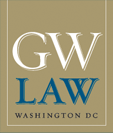Document Type
Article
Publication Date
2001
Status
Accepted
Abstract
This study updates an article published a decade ago by the same authors. It presents a systematic analysis of decisions in which EPA or its administrator was a named party in the federal courts of appeals during the 1990s. Relying on a data base of over 300 cases, the main topics of the study are judicial review of statutory interpretation and of EPA's use of science in its rulemaking proceedings. In both the statutory interpretation and scientific areas, one of our most significant findings is evidence that the federal courts have embraced what Tom Grey has termed the new formalism. As a feature of that judicial approach, courts evidence a reluctance to overrule agency decisions when doing so requires disagreeing with the agency on questions of degree or questions of trading off different policy considerations against one another. In the scientific area, this reluctance manifests itself in decisions declining to second-guess agency decisions about whether the data upon which EPA relied was inferior to data proposed by petitioners, whether EPA adequately assessed the weight of the evidence and whether models used by EPA were inferior to other models. In the statutory interpretation area, this reluctance manifests itself in declining to second guess the agency at Step Two of the Chevron analysis, i.e., when the question is whether or not the agency's resolution of conflicting policy considerations was reasonable. On the other hand, when attacks on EPA's reasoned decision making with respect to scientific issues could be characterized as pointing to a conclusion reached without any factual support, to a technical model unsuited to the issue, to a link in its reasoning process left completely unexplained, to internally inconsistent reasoning, or to a relevant factor left unanalyzed, those attacks were more successful. In each instance, identifying a categorical failure made judicial reversal more common. Likewise, cases in which statutory interpretation issues were made at Chevron Step One - i.e., the court found that the statutory meaning was clear - EPA was much more vulnerable to reversal than at Step Two. The article investigates why EPA and the courts may systematically and in good faith disagree over the location of the boundary between Steps One and Two of Chevron.
Our study also provides the first comprehensive picture of the kinds of challenges brought under the reasoned decision making doctrine espoused by State Farm, and of the specific sorts of disagreements in statutory interpretation between the agency and the courts that produce judicial reversals at Chevron Step One. It provides evidence that overall, EPA is much more successful in it statutory interpretations than other studies have suggested, with the differences in results attributable to selection bias in other studies. Finally, examining an issue first raised by the Schuck and Elliott study of Chevron - and contrary to the conventional wisdom that courts are second-guessing agency interpretations more often in recent years - our study finds that the "Chevron effect" of increased deference to agency interpretation, has persisted into the 1990s, at least with regard to EPA.
SSRN Link
http://ssrn.com/abstract=257601
Recommended Citation
Robert L. Glicksman & Christopher H. Schroeder, Chevron, State Farm and the EPA in the Courts of Appeals during the 1990s, Environmental Law Reporter News and Analysis, April, 2001 at Volume XXXI
